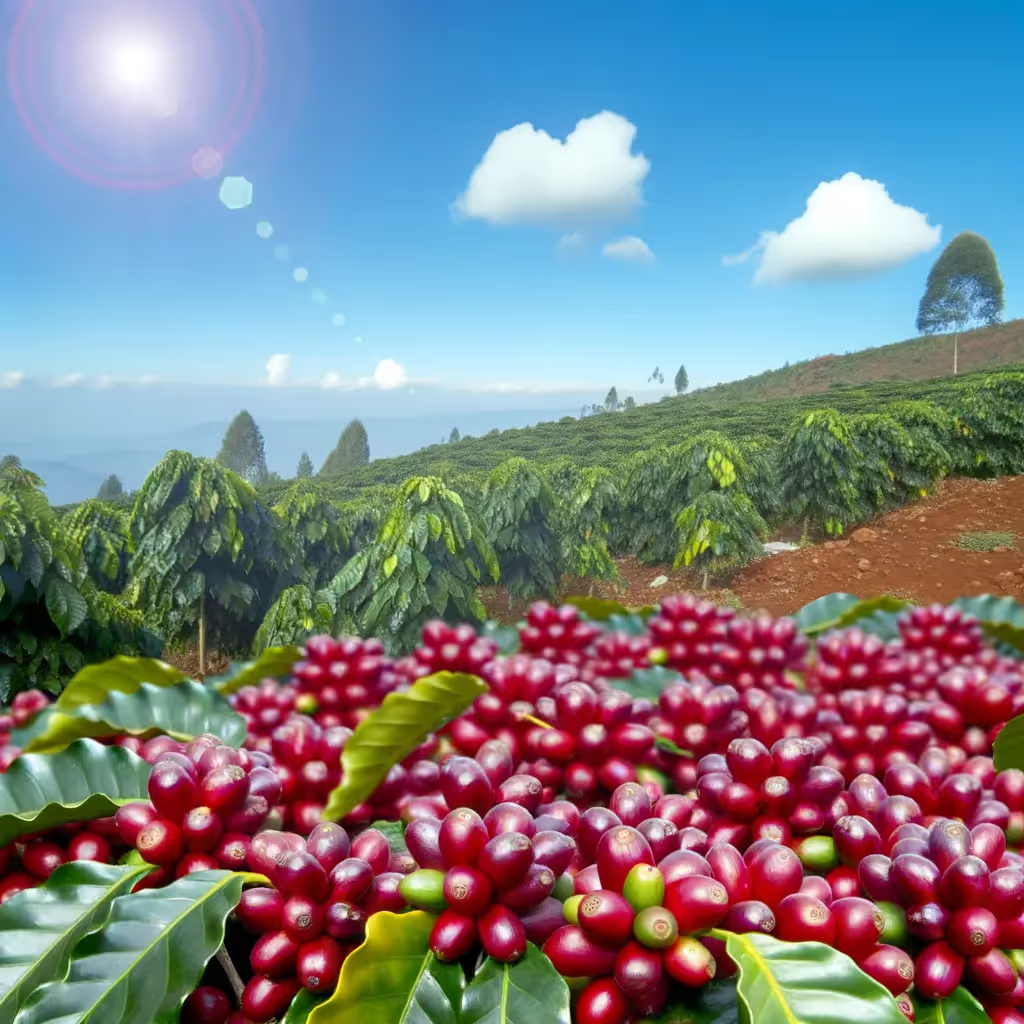Indian Vs. Rwandan Coffee
This comparison explores the unique qualities of Indian and Rwandan coffee, highlighting their distinct flavor profiles, processing methods, and cultural significance in the specialty coffee world.

Brief Description
Indian coffee is known for its unique monsooned processing method, which gives it a distinct flavor profile. Grown primarily in the Western Ghats, Indian coffee offers a rich, full-bodied experience with low acidity. The country's coffee culture dates back to the 17th century, and today, India produces both Arabica and Robusta beans, with a focus on sustainable and shade-grown practices.
Rwandan coffee is a hidden gem in the specialty coffee world, known for its bright acidity, complex flavors, and clean cup profile. Grown in the high-altitude regions of this small East African nation, Rwandan coffee benefits from rich volcanic soils and ideal growing conditions. The country's tumultuous history has given way to a thriving coffee industry, with smallholder farmers producing some of the most sought-after beans in Africa. Rwandan coffee is characterized by its tea-like body, citrus notes, and often floral or fruity undertones, making it a favorite among coffee enthusiasts seeking unique and vibrant flavors.
Importance of Comparison
Comparing Indian and Rwandan coffee is crucial for coffee enthusiasts seeking to expand their palate. These origins offer vastly different flavor experiences, from the full-bodied, low-acid Indian beans to the bright, complex Rwandan varieties. Understanding their unique characteristics helps consumers make informed choices and appreciate the diversity of global coffee production.
Key Attributes
Origin
Indian
Rwandan


Consumer Guide
When choosing between Indian and Rwandan coffee, consider your flavor preferences. If you enjoy full-bodied, low-acid coffee with spicy and nutty notes, Indian coffee might be your best choice. Opt for monsooned varieties for a truly unique experience. For those who prefer bright, complex flavors with citrus and floral notes, Rwandan coffee is an excellent option. Consider brewing methods as well; Indian coffee excels in French press and cold brew, while Rwandan shines in pour-over. Altitude also plays a role, with Rwandan beans typically grown at higher elevations, contributing to their distinct flavor profile. Lastly, consider supporting smallholder farmers by choosing Rwandan coffee, or opt for Indian beans if you're interested in sustainable, shade-grown practices.
Expert Opinions
Coffee expert James Hoffmann notes, 'Indian coffee, particularly monsooned Malabar, offers a truly unique flavor profile that's unlike any other origin.' Regarding Rwandan coffee, specialty roaster Anne Cooper states, 'The bright acidity and complex flavors of Rwandan beans make them a favorite for light roasts and single-origin pour-overs.' Both experts agree that these origins represent the diverse spectrum of flavors available in specialty coffee.
FAQs
Indian coffee typically has a full-bodied, low-acid profile with spicy, nutty, and earthy notes. Rwandan coffee, on the other hand, offers bright acidity with complex flavors, including citrus, floral, and red berry notes. The distinct processing methods and growing conditions contribute to these differences.
Indian coffee is primarily grown in the Western Ghats at altitudes of 1000-1500m, often using shade-grown practices. Rwandan coffee is cultivated at higher altitudes of 1200-2000m in volcanic soils, which contributes to its unique flavor profile. The different climates and soil compositions significantly impact the final taste of the beans.
Monsooned processing is a unique method used in India where green coffee beans are exposed to monsoon winds for 3-4 months. This process reduces acidity and creates a distinct flavor profile with increased body and reduced bitterness. It's particularly famous in the Monsooned Malabar variety, giving Indian coffee a truly unique character.
Indian coffee excels in French press, cold brew, and traditional South Indian filter coffee methods, which highlight its full body and low acidity. Rwandan coffee shines in pour-over, French press, and cold brew preparations, which emphasize its bright acidity and complex flavor notes. Experimenting with different brewing methods can help you find your preferred way to enjoy each origin.
India produces significantly more coffee, with an annual production of about 320,000 metric tons. Rwanda, being a smaller country with a more recent specialty coffee industry, produces around 16,000 metric tons annually. This difference in scale affects availability and potentially price, with Rwandan coffee often being considered more of a specialty product.
In India, coffee production has a long history dating back to the 17th century, contributing significantly to the agricultural economy and supporting many smallholder farmers. In Rwanda, the coffee industry has played a crucial role in the country's post-conflict recovery, providing income for numerous smallholder farmers and gaining recognition in the specialty coffee market, thus boosting the nation's economy and international reputation.
Conclusion
Indian and Rwandan coffees offer distinctly different experiences for coffee enthusiasts. Indian coffee, with its unique monsooned processing and full-bodied, low-acid profile, appeals to those who enjoy bold, earthy flavors. Rwandan coffee, known for its bright acidity and complex flavor notes, is perfect for those seeking a vibrant, nuanced cup. Both origins have rich histories and significant impacts on their local communities. Whether you prefer the spicy, nutty notes of Indian beans or the citrusy, floral characteristics of Rwandan varieties, exploring these diverse origins will undoubtedly expand your coffee palate and appreciation for global coffee cultures.






